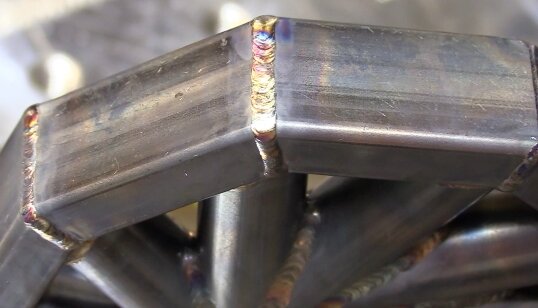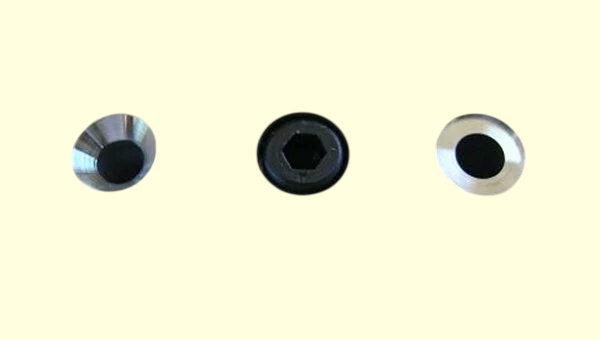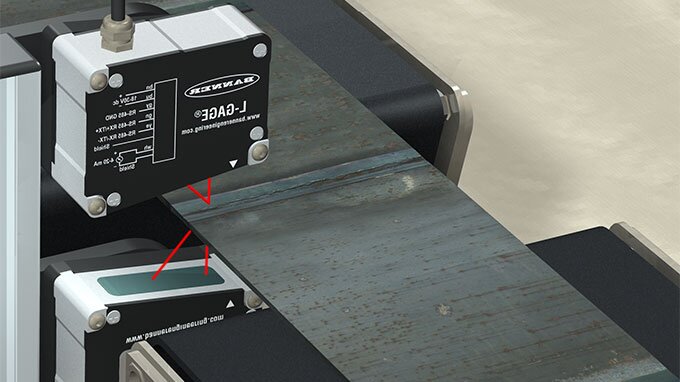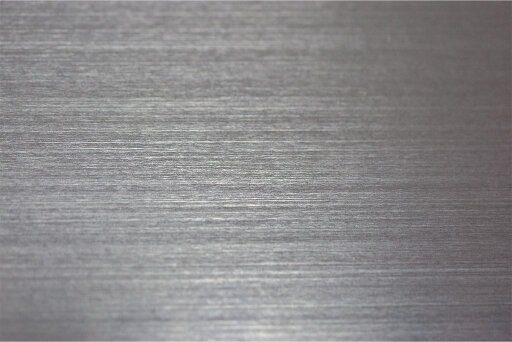Inżynierowie i projektanci często wybierają obróbkę CNC lub ręczną. Decyzja ta może znacząco wpłynąć na jakość, wydajność i opłacalność produktu.
Obróbka CNC oferuje wyższą precyzję, większą szybkość produkcji i spójność, podczas gdy obróbka ręczna zapewnia elastyczność i jest idealna do prostszych zadań na małą skalę. Wybór najlepszej techniki zależy od potrzeb projektu, budżetu i pożądanych rezultatów.
Nadal nie wiesz, która metoda najlepiej odpowiada Twoim potrzebom? Przyjrzyjmy się różnicom w szybkości, kosztach, dokładności i skalowalności.
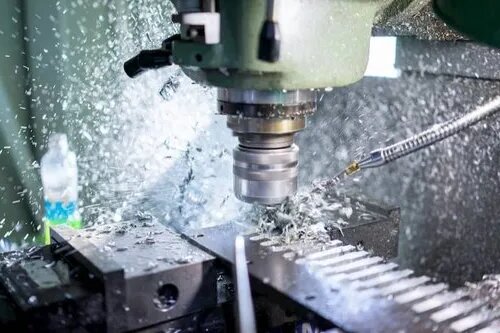
Co to jest obróbka CNC?
Obróbka CNC to proces produkcyjny wykorzystujący wstępnie zaprogramowane oprogramowanie do sterowania ruchem narzędzi i maszyn. Maszyny te mogą zautomatyzować cięcie, wiercenieoraz przemiał z wysoką precyzją.
Dzięki plikom CAD maszyny CNC mogą tworzyć części o skomplikowanych kształtach, zapewniając spójne wyniki w wielu jednostkach.
Jak działa obróbka CNC?
Obróbka CNC polega na tłumaczeniu projektu cyfrowego na instrukcje maszynowe, które sterują ruchem narzędzi skrawających. Poniżej przedstawiamy krok po kroku, jak działa ten proces:
- Projekt: Proces rozpoczyna się od utworzenia modelu 3D CAD części. Model ten jest konwertowany do formatu nadającego się do odczytu maszynowego, zwykle kodu G, który mówi maszynie CNC, jak ma się poruszać.
- Organizować coś: Operator ładuje i zabezpiecza materiał na łożu maszyny.
- Obróbka: Maszyna CNC wykonuje zaprogramowane instrukcje, precyzyjnie tnąc, wiercąc lub kształtując materiał.
- Wykończeniowy: Po zakończeniu procesu obróbki część i wszelkie procesy wykończeniowe są usuwane z maszyny.
Czym jest obróbka ręczna?
Obróbka ręczna to proces, w którym wykwalifikowani operatorzy używają obrabiarek do kształtowania i wytwarzania materiałów. W przeciwieństwie do obróbki CNC, która jest sterowana przez programy komputerowe, obróbka ręczna opiera się na doświadczeniu operatora w kontrolowaniu ruchów maszyny.
To praktyczne podejście pozwala na regulacje w locie, dzięki czemu idealnie nadaje się do niestandardowych części lub produkcji małoseryjnej.
Jak działa obróbka ręczna?
W obróbce ręcznej operator odgrywa kluczową rolę w kontrolowaniu ruchów maszyny i zapewnianiu prawidłowego kształtu. Oto przegląd tego, jak działa ten proces:
- Organizować coś: Materiał jest umieszczany na łożu maszyny lub uchwycie, a operator go zabezpiecza.
- Operacja: Operator ręcznie dostosowuje ustawienia maszyny, takie jak prędkość i posuw.
- Cięcie i kształtowanie: Obrabiarka usuwa materiał z przedmiotu obrabianego poprzez obracanie, cięcie lub szlifowanie, w zależności od rodzaju używanej maszyny.
- Wykończeniowy: Po obróbce operator sprawdza część pod kątem innych wymagań dotyczących wykończenia.
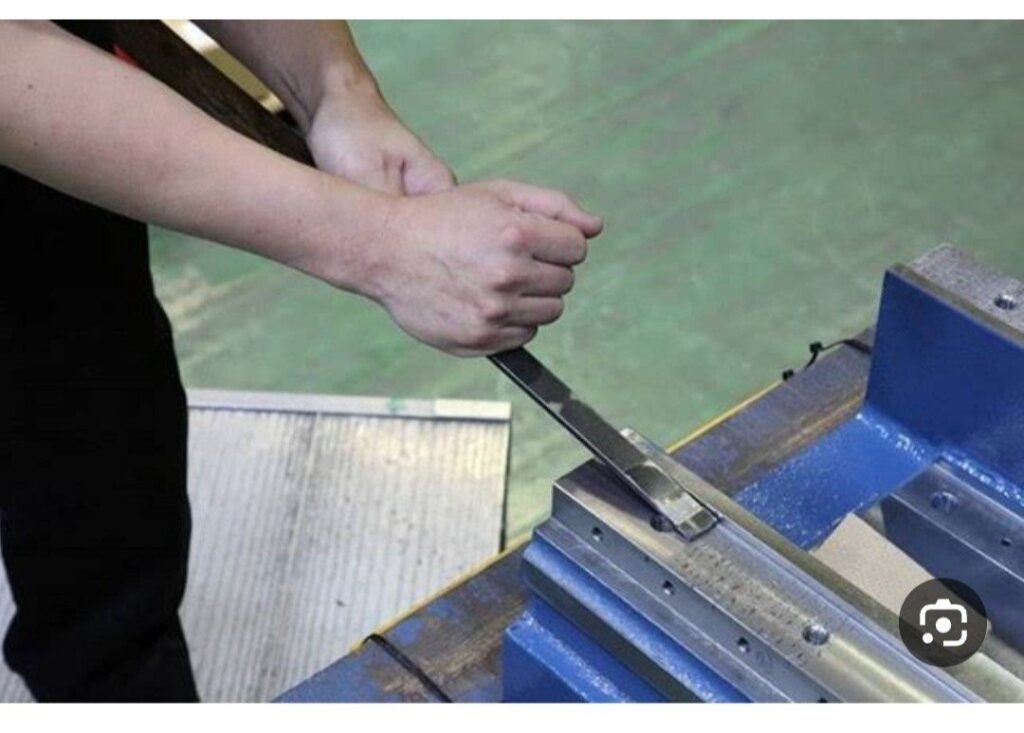
Plusy i minusy obróbki CNC i obróbki ręcznej
Zarówno obróbka CNC, jak i ręczna mają swoje mocne strony i ograniczenia. Przeanalizujmy zalety i wady każdej z nich, aby pomóc określić, która metoda jest najlepsza dla konkretnych potrzeb.
Obróbka CNC: Plusy i minusy
Plusy:
- Precyzja i konsekwencja: Maszyny CNC oferują niezwykle wysoką precyzję, zapewniając, że każda część jest produkowana zgodnie ze specyfikacją.
- Wydajność i szybkość: Po zaprogramowaniu maszyna może pracować w sposób ciągły, skracając czas przestojów i zwiększając wydajność.
- Złożone projekty: Maszyny CNC mogą obsługiwać złożone geometrie i skomplikowane projekty, które byłyby trudne, jeśli nie niemożliwe, do osiągnięcia przy obróbce ręcznej.
- Automatyzacja: Zmniejszona liczba błędów ludzkich i minimalna interwencja operatora oznacza, że maszyny CNC mogą produkować części przy niewielkim nadzorze, poprawiając wydajność przepływu pracy.
- Skalowalność: CNC doskonale nadaje się do produkcji masowej, ponieważ ten sam program może produkować setki lub tysiące identycznych części.
Cons:
- Wysoki koszt początkowy: Maszyny CNC wymagają znacznych inwestycji początkowych, w tym kosztu maszyny, oprogramowania i szkolenia operatora.
- Mniejsza elastyczność w przypadku pracy niestandardowej: Po utworzeniu programu CNC wprowadzanie zmian w projekcie może być czasochłonne i kosztowne, zwłaszcza w przypadku małych, jednorazowych projektów.
- Konserwacja: Maszyny CNC mogą być skomplikowane w konserwacji i naprawie, wymagając wykwalifikowanych techników i części zamiennych, co może być kosztowne.
Obróbka ręczna: Plusy i minusy
Plusy:
- Elastyczność: Obróbka ręczna zapewnia większą elastyczność produkcji niestandardowej, jednorazowej lub małoseryjnej.
- Niższa inwestycja początkowa: Maszyny ręczne są generalnie tańsze niż maszyny CNC.
- Wykwalifikowana siła robocza: Obróbka ręczna zapewnia cenne doświadczenie praktyczne, pozwalając wykwalifikowanym mechanikom na dostosowanie i udoskonalenie części z wysokim kunsztem.
- Idealny dla małych partii: Obróbka ręczna może być szybsza i bardziej opłacalna niż konfiguracja maszyny CNC w przypadku małych serii produkcyjnych lub pojedynczych elementów.
Cons:
- Niższa precyzja i spójność: Obróbka ręczna zależy w dużej mierze od umiejętności operatora. Może to skutkować zmiennością wymiarów części, zwłaszcza w przypadku produkcji dużych ilości.
- Niższa prędkość produkcji: Obróbka ręczna jest znacznie wolniejsza niż obróbka CNC, ponieważ operator musi ręcznie ustawić i wyregulować każdą część.
- Ograniczone do prostszych projektów: Obróbka ręczna zapewnia elastyczność, ale jest mniej wydajna lub wydajna w przypadku produkcji bardzo złożonych lub szczegółowych części.
Kluczowe różnice między obróbką CNC a ręczną
Zrozumienie kluczowych różnic między obróbką CNC i ręczną może pomóc w określeniu, która metoda najlepiej odpowiada Twoim potrzebom. Poniżej porównamy te dwie metody w oparciu o dokładność, szybkość, koszty i wymagania dotyczące robocizny.
Dokładność i precyzja
Ponieważ proces obróbki CNC jest w pełni zautomatyzowany i kontrolowany przez programy komputerowe, błąd ludzki jest zminimalizowany.
Obróbka ręczna zależy od zdolności operatora do kontrolowania narzędzi, co może prowadzić do niewielkich różnic w wymiarach części.
Porównanie prędkości i szybkości produkcji
Maszyny CNC zostały zaprojektowane z myślą o szybkości i wydajności, zwłaszcza w produkcji wielkoseryjnej. Po skonfigurowaniu mogą pracować w sposób ciągły, często bez interwencji człowieka.
Obróbka ręczna jest zazwyczaj wolniejsza, ponieważ operator musi regulować maszynę w trakcie całego procesu.
Koszty konfiguracji i operacyjne
Chociaż obróbka CNC oferuje długoterminowe oszczędności w zakresie wydajności produkcji, początkowe koszty konfiguracji są wyższe. Maszyny CNC są drogie, a do tego dochodzą dodatkowe koszty oprogramowania CAD/CAM, szkoleń i bieżącej konserwacji.
Początkowa inwestycja w maszyny ręczne jest stosunkowo niska, dzięki czemu są one bardziej dostępne dla mniejszych firm lub niestandardowych sklepów. Koszty konfiguracji są również niższe, ponieważ nie jest wymagane programowanie ani złożone oprogramowanie.
Wymagania dotyczące siły roboczej i umiejętności
Maszyny CNC wymagają wykwalifikowanych operatorów, którzy potrafią programować, konfigurować i konserwować maszyny.
Obróbka ręczna wymaga wysokiego poziomu rzemiosła, ponieważ operatorzy muszą rozumieć maszyny, materiały i używane narzędzia.
Zastosowania obróbki CNC
Obróbka CNC jest stosowana w różnych branżach ze względu na jej precyzję, szybkość i wszechstronność. Poniżej przedstawiono kilka kluczowych obszarów, w których obróbka CNC wyróżnia się na tle innych:
Lotnictwo i kosmonautyka
Maszyny CNC są często wykorzystywane do produkcji komponentów, takich jak łopatki turbin, części silników i elementy konstrukcyjne. Zdolność do osiągania wąskich tolerancji i złożonych geometrii sprawia, że obróbka CNC jest idealna do zastosowań lotniczych.
Motoryzacja
W produkcji motoryzacyjnej, obróbka CNC wytwarza wysokiej jakości, niezawodne części do zastosowań OEM i na rynku wtórnym. Obejmują one komponenty silnika, części podwozia, systemy zawieszenia i niestandardowe modyfikacje pojazdów.
Urządzenia medyczne
Obróbka CNC ma kluczowe znaczenie w branży medycznej, zwłaszcza w przypadku tworzenia precyzyjnych części wykorzystywanych w urządzeniach takich jak narzędzia chirurgiczne, implanty i protezy. Komponenty te wymagają wysokiej dokładności i kompatybilności materiałowej, co może zapewnić obróbka CNC.
Elektronika
Obróbka CNC jest często wykorzystywana do produkcji części dla przemysłu elektronicznego, takich jak smartfony, tablety i inne obudowy elektroniki użytkowej.
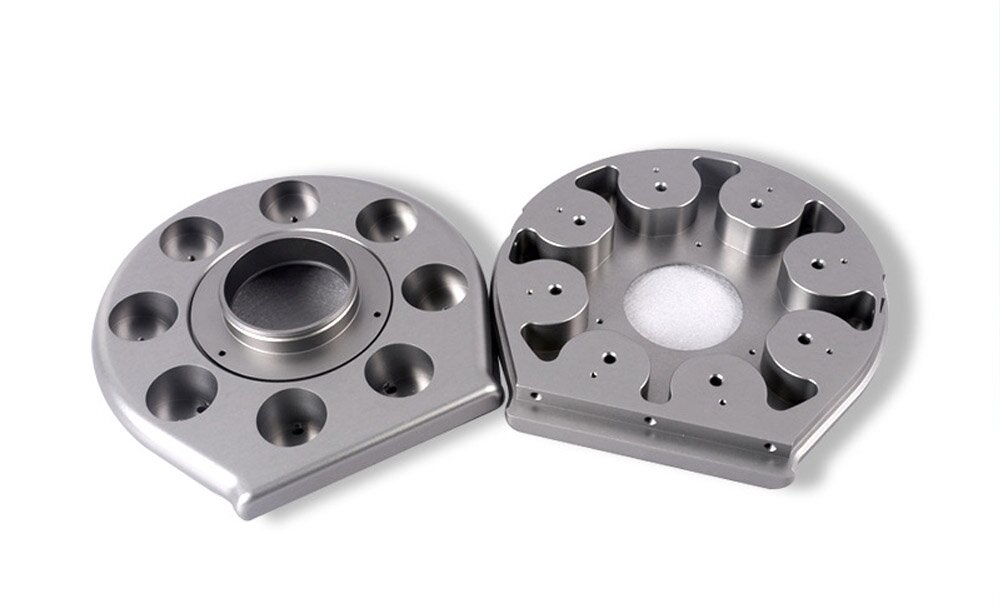
Zastosowania obróbki ręcznej
Obróbka ręczna oferuje korzyści w przypadku produkcji małoseryjnej. Oto kilka kluczowych zastosowań, w których obróbka ręczna pozostaje preferowaną opcją:
Rozwój prototypu
Obróbka ręczna jest często wykorzystywana na wczesnych etapach rozwoju produktu, zwłaszcza do tworzenia prototypów. Obróbka ręczna pozwala na szybkie zmiany i modyfikacje projektu.
Niestandardowe części i naprawy
Obróbka ręczna jest idealna do produkcji niestandardowych części lub naprawy istniejących komponentów. Elastyczność maszyn ręcznych pozwala na szybkie dostosowanie do produkcji lub naprawy uszkodzonych części.
Produkcja niskonakładowa
Obróbka ręczna stanowi opłacalne rozwiązanie dla małych serii produkcyjnych lub części jednorazowych. Chociaż może być wolniejsza niż CNC, możliwość szybkiej zmiany narzędzi lub procesów sprawia, że jest to realna opcja dla produkcji małoseryjnej.
Jaka jest różnica w kosztach między obróbką CNC a obróbką ręczną?
Podstawowa ręczna frezarka może zaczynać się od około $3,000, podczas gdy frezarka CNC zazwyczaj zaczyna się od około $5,000. Jednakże, w zależności od złożoności i wielkości maszyny, ceny maszyn CNC mogą znacznie wzrosnąć, czasami sięgając setek tysięcy dolarów.
Tokarki ręczne są generalnie bardziej przystępne cenowo, z cenami około $1,000, podczas gdy tokarki CNC zazwyczaj zaczynają się od $5,000 i rosną w zależności od funkcji i możliwości.
Patrząc na stawki godzinowe, usługi obróbki ręcznej są generalnie bardziej przystępne cenowo, a stawki zaczynają się od około $40 za godzinę. Z drugiej strony, usługi obróbki CNC są droższe ze względu na zaawansowanie i automatyzację sprzętu. Podstawowa 3-osiowa maszyna CNC kosztuje zazwyczaj około $80 za godzinę.
Ważną kwestią przy porównywaniu kosztów godzinowych jest to, że obróbka CNC oferuje znacznie wyższą wydajność niż obróbka ręczna.
Obróbka CNC a obróbka ręczna: Którą technikę wybrać?
Wybór między obróbką CNC a ręczną zależy od konkretnych wymagań projektu. Poniżej znajduje się przewodnik, który pomoże Ci określić, która technika jest najlepsza dla Twoich potrzeb.
Kiedy wybrać obróbkę CNC
- Potrzebna jest wysoka precyzja i wąskie tolerancje.
- Twój projekt obejmuje złożone geometrie.
- Produkujesz duże ilości.
Kiedy wybrać obróbkę ręczną
- Twój projekt jest niewielki lub niestandardowy.
- Masz ograniczenia budżetowe.
- Elastyczność i zdolność adaptacji są ważniejsze niż szybkość.
Wnioski
Wybór między obróbką CNC a ręczną zależy w dużej mierze od potrzeb produkcyjnych. Każda technika ma swoje zalety, więc zrozumienie swoich potrzeb pomoże w podjęciu świadomej decyzji.
Jeśli jesteś gotowy zoptymalizować swój proces produkcyjny lub potrzebujesz pomocy w zakresie rozwiązań obróbki skrawaniem dostosowanych do Twojej firmy, skontaktuj się z nami już dziś na spersonalizowaną konsultację. Znajdźmy najlepszą metodę obróbki dla Twojego projektu!
Hej, jestem Kevin Lee

Przez ostatnie 10 lat byłem zanurzony w różnych formach produkcji blach, dzieląc się tutaj fajnymi spostrzeżeniami z moich doświadczeń w różnych warsztatach.
Skontaktuj się z nami

Kevin Lee
Mam ponad dziesięcioletnie doświadczenie zawodowe w produkcji blach, specjalizując się w cięciu laserowym, gięciu, spawaniu i technikach obróbki powierzchni. Jako dyrektor techniczny w Shengen, jestem zaangażowany w rozwiązywanie złożonych wyzwań produkcyjnych i napędzanie innowacji i jakości w każdym projekcie.

